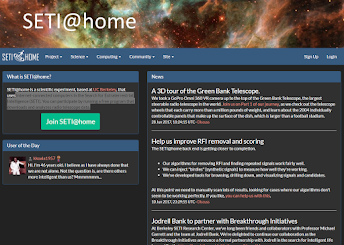Large scientific research requires powerful computations. Mostly requires super computers which have high calculation powers and storage capacities i.e. Super computers. However, such computers are costly and owned by specific institutes. For instance IBM Blue Gene is used for high calculation performance in space requirements and energy consumption. Similarly, NEC Earth Simulator is another example that used for Japanese Aerospace Exploration Agency, Japan Atomic Energy Research Institute, and Japan Marine Science and Technology Center . However, only few Individual
institutions and countries have such computational powers while others are
doing hiring or running small scales.
In this regards, some project have designed
to take the public cooperation for their studies. These programs are virtual hard
disc sharing programmes. The basic idea of such programs is sharing the
available unused memory in the computer while connecting to the internet. This memory
is used for the temporary storage of the ongoing processing works of the
particular programmes. Such programmes usually focus on more calculation power
required tasks.
SETI @home is such programme which has launched by University
of California with NASA. This programme
is used Internet-connected computers in the Search for Extra-terrestrial Intelligence
(SETI).
The users are required to
download a programme and allow the computers to link with the main programme. The
login is available by clicking the following link.
Another similar programme is Rosetta@home. This focuses on the structuring of 3D shapes of protein molecules by
using Internet-connected computers. The following link is reklated to the
particular programme.





No comments:
Post a Comment